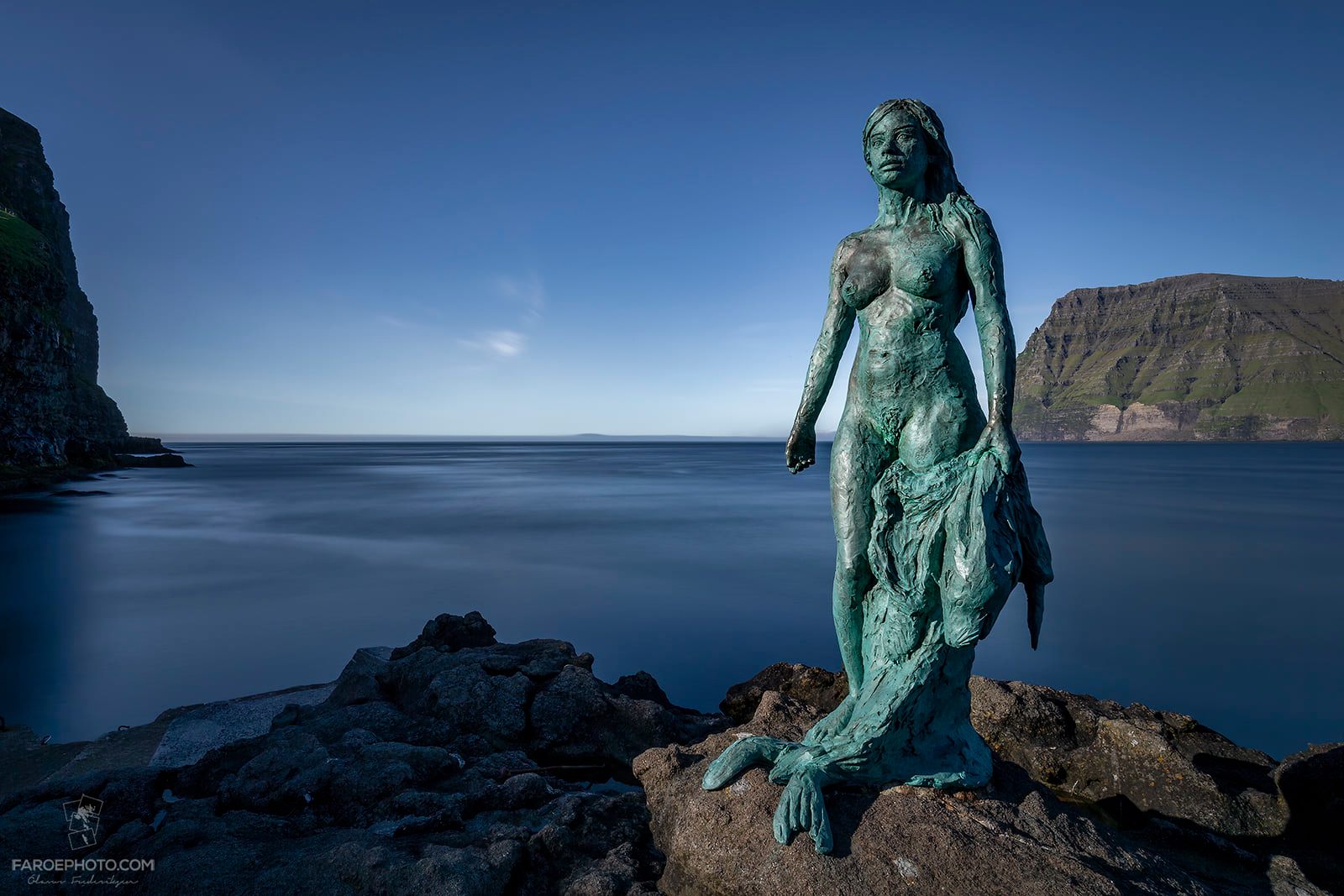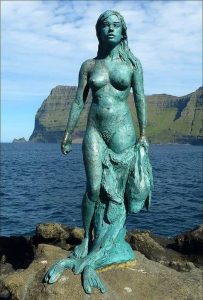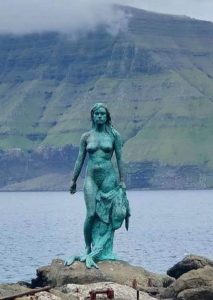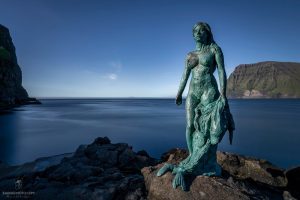Kópakonan: The Selkie’s Curse in Bronze and Steel

On the remote, wind-lashed shores of the Faroe Islands stands a statue — silent, haunting, beautiful. Kópakonan: The Selkie’s Curse in Bronze and Steel tells the story behind this striking sculpture, but more than that, it breathes life into an ancient legend that pulses through the veins of Faroese folklore. This is not merely a tale of myth and metal. It is a profound meditation on loss, transformation, and the dangerous boundaries between the human and the wild.

At the heart of the story lies the selkie — a mythical creature who lives as a seal in the sea but can shed her skin to walk as a human on land. The legend of Kópakonan (The Seal Woman) is one of the Faroe Islands’ most enduring tales. In it, a fisherman steals a selkie’s seal skin, forcing her into marriage and motherhood. Though she appears to accept her fate, her soul remains bound to the sea. One day, she finds her hidden skin, returns to the ocean, and vanishes — but not without leaving behind a chilling curse that echoes through generations.

Kópakonan: The Selkie’s Curse in Bronze and Steel explores not only the myth itself, but the cultural weight it carries. The book dives into how this ancient story was brought into the modern world through sculpture, immortalized in bronze on a rock in Mikladalur. Through interviews with the artist, local historians, and folklorists, the book weaves a powerful narrative about art as memory, legend as identity, and how storytelling can shape the soul of a place.
What makes this work remarkable is how it bridges myth and material. The cold, shining bronze of the selkie woman stands as a physical reminder of the line between freedom and captivity, nature and civilization, myth and memory. Her eyes, cast in steel, seem to both mourn and accuse — a frozen moment of rage, sorrow, and longing.

In an era when ancient stories risk being forgotten, Kópakonan brings the selkie’s sorrow back to the surface. It invites us to listen, not just to the sea, but to the voices carried within it — voices of women, of wilderness, of wrongs never made right. This is a story not just told, but remembered, in bronze, steel, and soul.